Once you visited a fair share of National Parks around the world, you start dreaming of something wilder. Of a place that tests and challenges you before it rewards you. Alaska is one such place.
Alaskan wilderness is one of the last remaining true wilderness areas on earth. It is a rugged land of endless space, dramatic landscapes, towering peaks and massive glaciers. Over 60% of this vast wilderness is protected by the Reserves and National Parks of Alaska. And because of Alaska’s vastness, this area represents more than half of the combined area of all National Parklands in the United States.
Alaska’s wild landscapes are not limited to the National Parks, of course. Towns like Haines or Whittier give you a chance to experience Alaska’s rugged wilderness from epic glaciers to abundant wildlife without sacrificing creature comforts. Alternatively, cruising along Alaska’s stunning coastline is one of the best ways to see Alaska.
Despite the unforgiving climate in winter, the Alaskan wilderness harbours a wealth of iconic Alaskan wildlife, from brown bears, wolves, caribou, and musk oxen to sea otters, killer whales and bald eagles. In fact, bear viewing is one of the most popular activities in Alaska.
A brief introduction to the National Parks of Alaska
How many National Parks are in Alaska?
There are 8 National Parks in Alaska: Denali, Glacier Bay, Kenai Fjords, Katmai, Wrangell-St Elias, Gates of the Arctic, Kobuk Valley, and Lake Clark National Park.
Which National Parks in Alaska can you drive to?
Three of Alaska’s National Parks are accessible by road from Anchorage: Denali (4.5hr drive), Wrangell-St Elias (7.5hr drive) and Kenai Fjords (2.5 hr drive).
What is the biggest National Park in Alaska?
At 13.2 million acres, Wrangell-St Elias is not only the largest National Park in Alaska but also the largest National Park in the United States.
Which is the least visited National Park?
Gates of the Arctic National Park in northern Alaska. Because of its remoteness and isolation, Gates of the Arctic receives the least visitors of all the National parks in the United States. Only 10,518 people visited Gates of the Arctic in 2019.
Each of Alaska’s National Parks reveals a different side of its vast wilderness and offers unique experiences. To watch brown bears, head to Katmai or Lake Clark; to see calving glaciers, take a cruise in Glacier Bay or Kenai Fjords; to witness Caribou migration, visit the remote Kobuk Valley; for easy access to rugged wilderness, take a shuttle bus in Denali; or for complete solitude and isolation venture to Gates of the Arctic.
To help you decide which Alaskan National Park is the right adventure for you, I’ve put together this guide in collaboration with fellow travellers to cover all 8 National Parks of Alaska.
READ MORE: 50 Outstanding Safari Holidays Destinations Outside of Africa
Denali National Park
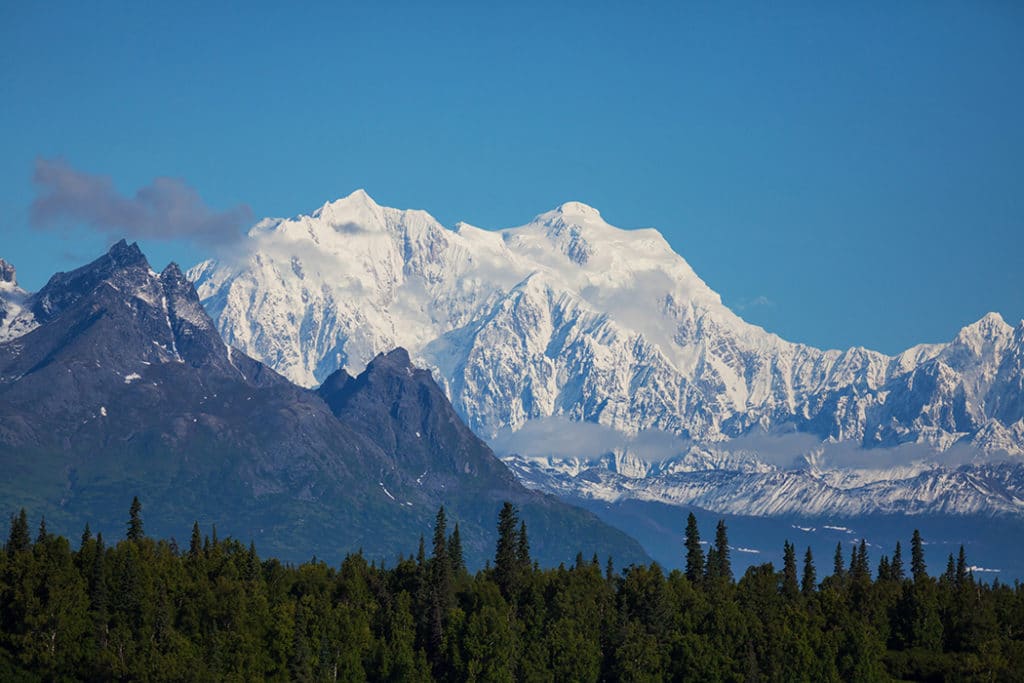
Denali is one of the most stunning National Parks in Alaska. It‘s home to Mount Denali – the highest mountain in North America. The mountain itself is like from a different world. Mt. Denali is enormous, and it can be seen from as far as Anchorage.
Don’t miss a bus trip to the park (there is no other way to get there, except for sightseeing flights). There are several alternatives and tours you can choose from (the deeper you go into the park, the more wildlife you see). One of the most beautiful views of Mt. Denali is from the Eielson Visitor Center.
If you have more time, head out into the wild for a few days with a “camper bus”. Backpacking in Denali National Park is a very unique experience. If you decide on a backpacking adventure, start at the Ranger station to get your permit and learn about camping safety in a bear country.
If you are a dog fan, you shouldn’t miss the husky demonstration. It’s a daily program that takes about 30 minutes and it’s free (there is also a free shuttle going there from the visitor center).
The best time to visit the Denali National Park is in the summer season, approximately from June to August. In fact, it’s one of the best places to visit in June in the US.
It’s better to plan at least several days for your visit (especially if you plan backpacking). Also, remember that monumental Mt. Denali is visible only 1/3 of the time, so the longer you stay, the better is your chance of seeing it. You can find more information in this Alaska Travel Guide.
If you are visiting in winter, between the months of September to April, and would like a chance to see the Northern Lights, take this tour from Healy and go Aurora chasing in the Denali area.
Kenai Fjords National Park
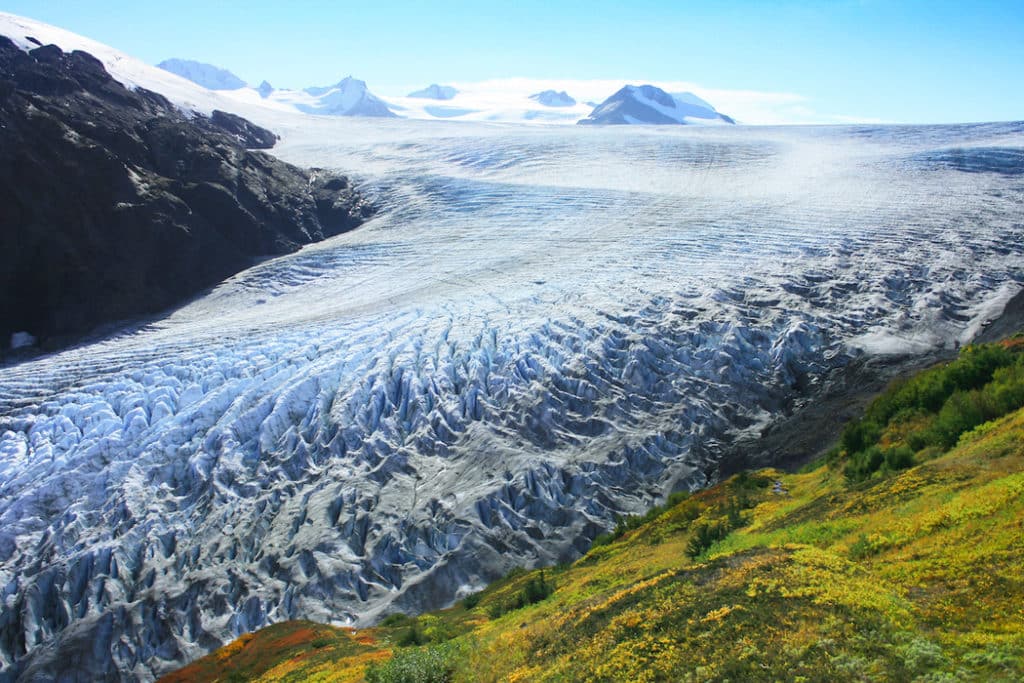
One of the most epic parks in Alaska to visit is Kenai Fjords National Park in the southern part of the state. The Alaska national park spans over 660,000 acres and is one of the least visited National Parks in the US, but it is so worth a trip to if you’re into glaciers, wildlife, and mind-blowing scenery.
Kenai Fjords National Park’s most famous attraction is Exit Glacier, the only attraction in the park that you can drive to. At Exit Glacier, you will find a nature center, camping opportunities, and plenty of hiking trails (even some going to Harding Ice Field).
Most people don’t visit Kenai Fjords National Park for a road trip, however. They visit to take a boat trip around the picturesque fjords that are home to some of North America’s most spectacular wildlife. You can find orcas, humpback whales, seals, puffins, and much more in the fjords.
There are many things to do in Kenai Fjords National Park for adventurers, such as kayaking, boating, fishing, and hiking. You can also take a helicopter ride over the park, admiring its untouched scenery from above.
The best way to visit Kenai Fjords is to make your way to Seward, the closest town to the park. There are several hotels, cozy cabins, places to eat, and tours (like this 6-hr Kenai Fjords cruise) that will depart from Seward harbor. This is definitely one of the best places to visit in Alaska for nature lovers.
READ MORE: 23 Stunning Canyons in the US to Add to Your Bucket List
Wrangell – St. Elias National Park
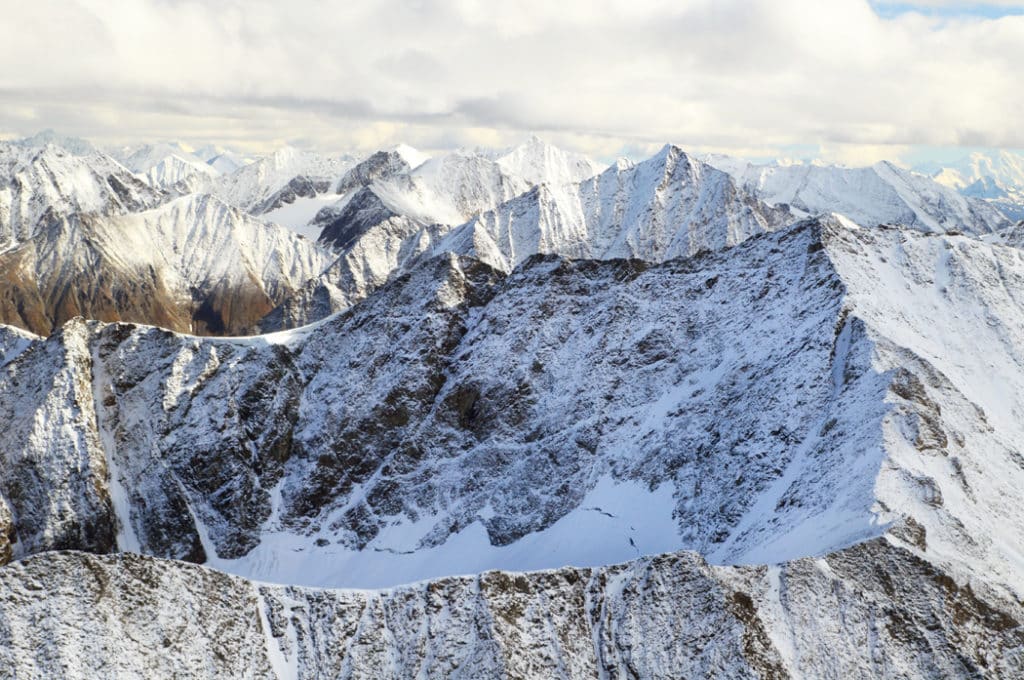
All National Parks in Alaska are vast, but none match the expanse of Wrangell-St. Elias National Park. At 13-million-acres, it is the largest National Park in the United States. Twice the size of Denali and bigger than Costa Rica, Wrangell-St. Elias is all about vastness. Even the journey to the park from Anchorage passes through 3 different mountain ranges and takes 7.5 hours.
The park is known for its mountain peaks, volcanos and glaciers. Of the 16 highest peaks in the United States, nine are located in Wrangell-St.Elias. The park’s Nabesna Glacier is the longest non-polar valley glacier in the world. Some of the park’s mountain ranges, like the Wrangell mountain range, are also volcanic. Mt Wrangell’s last eruption occurred over a century ago and left behind a massive lava field.
Unlike most National Parks in Alaska, Wrangell-St. Eliss is assessable by car. A rough road runs through the park connecting Chitina, just outside the park to the small town of McCarthy and the nearby ghost town, Kennicott.
McCarthy is a good town to base yourself while exploring the park. You can rent a small cabin for a couple of days or stay at one of the lodges in town. Kennicott Wilderness Guides offer hiking, pack-rafting, ice climbing, as well as multi-day trips to the wilderness of Wrangell-St. Elias.
Glacier Bay National Park
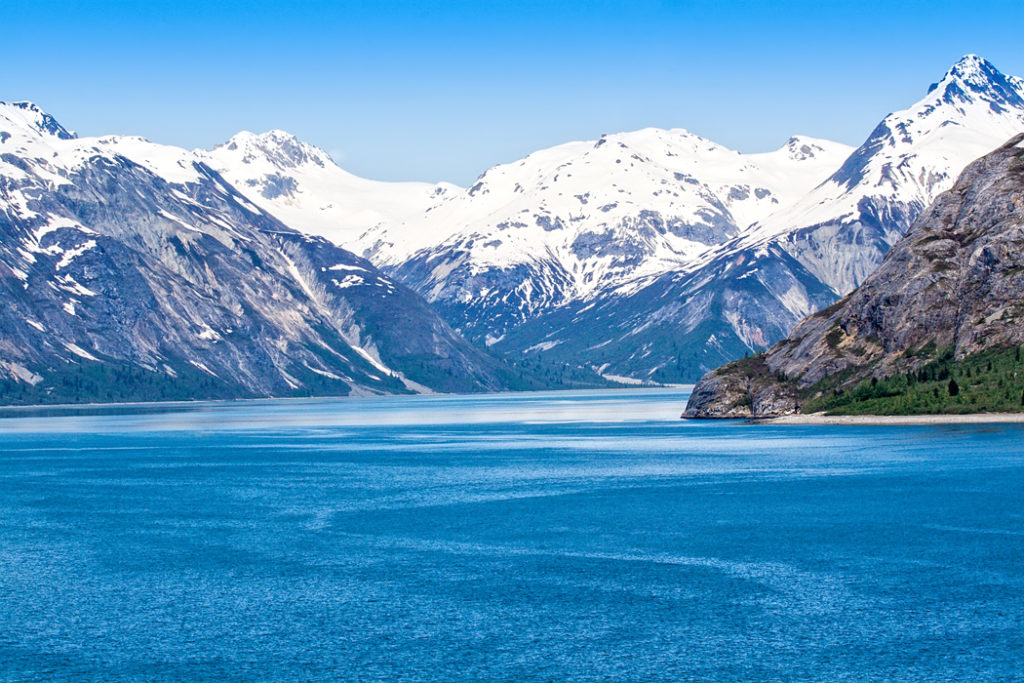
Glacier Bay National Park is an icy wonderland of snow-capped mountains and tidewater glaciers. This sprawling wilderness sanctuary is protected by several designations, including being a UNESCO Biosphere Reserve and World Heritage Site.
Due to the remote location, and the fact that it is essentially roadless, the park can only be explored by boat, foot, or small plane. The easiest and most popular way to see Glacier Bay is by cruise ship. Cruising is generally considered to be one of the best ways to experience Alaska. In the summer, several cruise lines visit Glacier Bay as part of their Alaska cruise itineraries.
For independent travellers, make your way to Gustavus – a small settlement that serves as the gateway to the park. If you are keen to stay in Gustavus overnight, there are a few accommodation options along the waterfront. From there, you can drive to Bartlett Cove at the entrance to Glacier Bay.
Once at Bartlett Cove, you can stop in at the visitor centre for some information about what to do during your visit.
The top activity is the full-day boat tour of Glacier Bay. On this tour, you’ll sail to the end of the bay, where you can see several tidewater glaciers, the most impressive being Margerie Glacier. This active glacier frequently calves so watch for falling ice!
Other things to do in the park include hiking, flightseeing, tent camping, fishing, kayaking, and wildlife watching. Have your binoculars handy because you may spot sea lions, harbor seals, sea otters, and whales while out on the water.
Since Glacier Bay is a protected area, inform yourself of the visitor guidelines and obtain the required permits for camping and recreational boating.
Katmai National Park
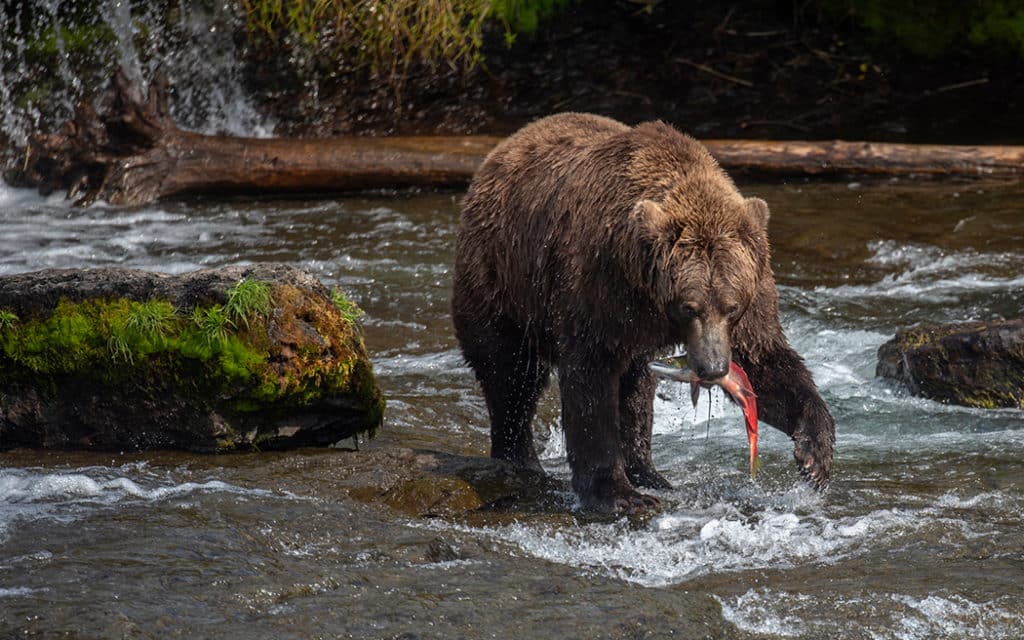
Katmai National Park and Preserve in southern Alaska is famous for brown bears and the Valley of Ten Thousand Smokes. It is one of the best places for bear watching in Alaska because Katmai contains the world’s largest protected brown bear population, estimated to number about 2,200. The area also protects the valley of volcanos. The park includes as many as 18 individual volcanoes, seven of which have been active since 1900.
Alaska bear viewing at Brooks Camp in Katmai stands out as a premier location for photographers and wildlife enthusiasts, offering exceptional opportunities to witness brown bears skillfully catching and feasting on abundant sockeye salmon. There are wildlife viewing platforms along the river and Brooks Falls. There are also opportunities for fishing, hiking, or going on a tour to see the Valley of Ten Thousand Smokes’ volcanoes.
The park is located on the Alaska Peninsula, about 290 miles (470 km) southwest of Anchorage. There are no roads to the park. The only way to get to the park is by plane from Anchorage to King Salmon, and then by floatplane or boat from King Salmon to the Park.
There is only one Lodge in the park where you can stay overnight. It’s Brooks Lodge, and there is a Lottery Application to get a place in the lodge. However, there is also a tent campground which is easier to book.
The park and preserve are open year-round. But at Brooks Camp, services are offered only from June 1 through September 17. The Brooks Lodge and campground are also open only this time. In other months only minimal visitor services are offered. The best months for bear viewing at Brooks Camp are July, August, and September.
Lake Clark National Park
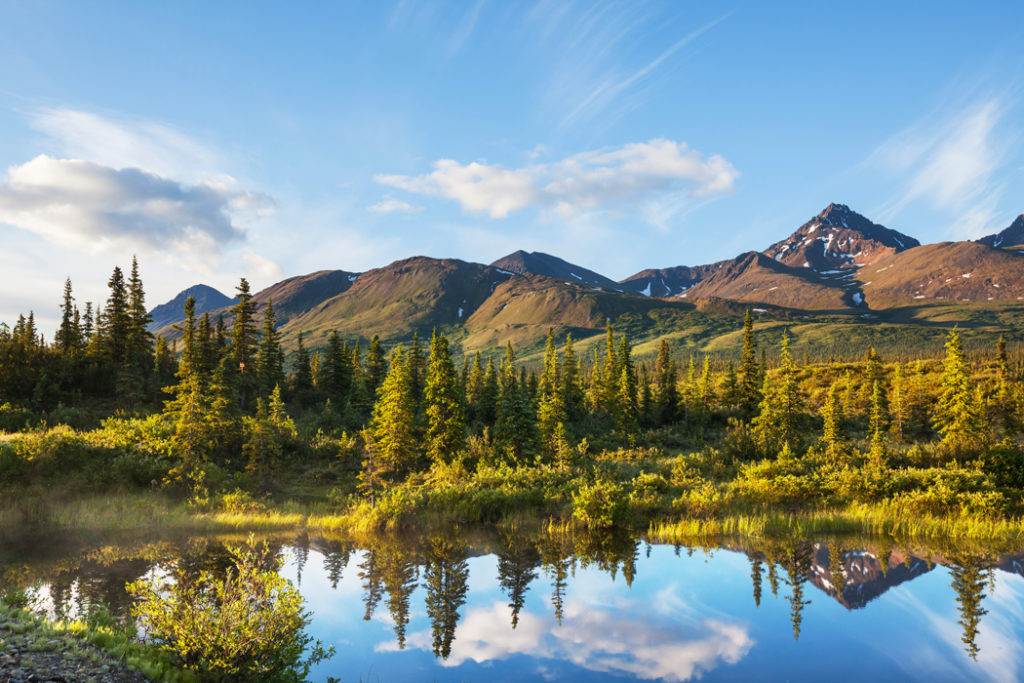
You can see Lake Clark National Park across the water from Anchorage, yet the only way to get there is by air taxi or by boat at certain times of the year. A good base for exploring the park is Port Alsworth – a small community of just over 150 people. There you can rent a cabin on the lake and visit Lake Clark Visitor Center.
Like Katmai National Park further south, Lake Clark is the land of brown bears. Every spring, hungry bears emerge from hibernation and congregate in high numbers on the mudflats of Cook Inlet coastline to gorge on clamps and salt marsh vegetation.
The good spots for bear watching in Lake Clark National Park are Chinitna Bay, Crescent Lake, Silver Salmon Creek and Shelter Creek and Tuxedni Bay. These areas are accessible only by air taxi – there are no roads in the park.
If you have more time in the park, hike some of the stunning trails through the pristine Alaskan wilderness. The most popular and well-maintained trails are on the Tanaluan trail system, like the Tanalian Falls and Kontrashibuna Lake Beaver Pond trails. If you prefer to go off-trail hiking or take an overnight hike, it’s best to hire a guide to take you.
Gates of the Arctic National Park
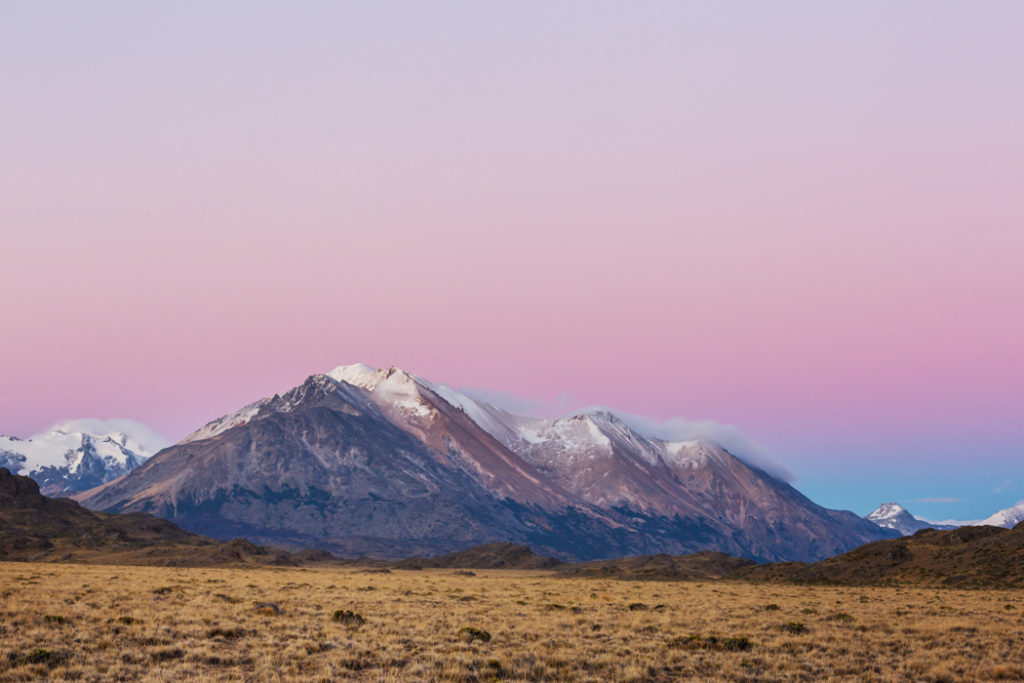
This is the true pristine wilderness, the final frontier of modern civilization. The vast landscape (8 million acres) of the Gates of the Arctic National Park has no roads or trails running through it. The only way to survive there is by living with the land as indigenous people have done for thousands of years, sharing the landscape with the caribou, wolves, grizzly bears and the shaggy musk oxen.
One of the ways to explore Gates of the Arctic is by floating one of its six wild rivers: John River, Noatak River, Kobuk River, Alatna River, Tinyaguk River, and Koyukuk River. The only way to access the rivers is by air taxi, so make sure yours is a collapsible boat, like a raft or an inflatable canoe.
It is also possible to access the park by hiking in from the rugged Dalton Highway – the closest road to the Gates of the Arctic boundary. A hike in this remote and challenging landscape is not to be taken lightly, and it is best to visit one of the park’s visitor centers located in Fairbanks, Coldfoot and Bettles.
Whichever way you enter the park, be prepared to rely on your own navigation and survival skills, embrace the silence and the solitude, and be surrounded by the larger-than-life, spectacular but unforgiving ancient landscape. And if you don’t feel up to the challenge of exploring Gates of the Arctic independently, you can join an organized tour. Or stay at the luxury fly-in Iniakuk Lake Wilderness Lodge on the edge of the park and use it as your base for exploring the national park.
Kobuk Valley National Park
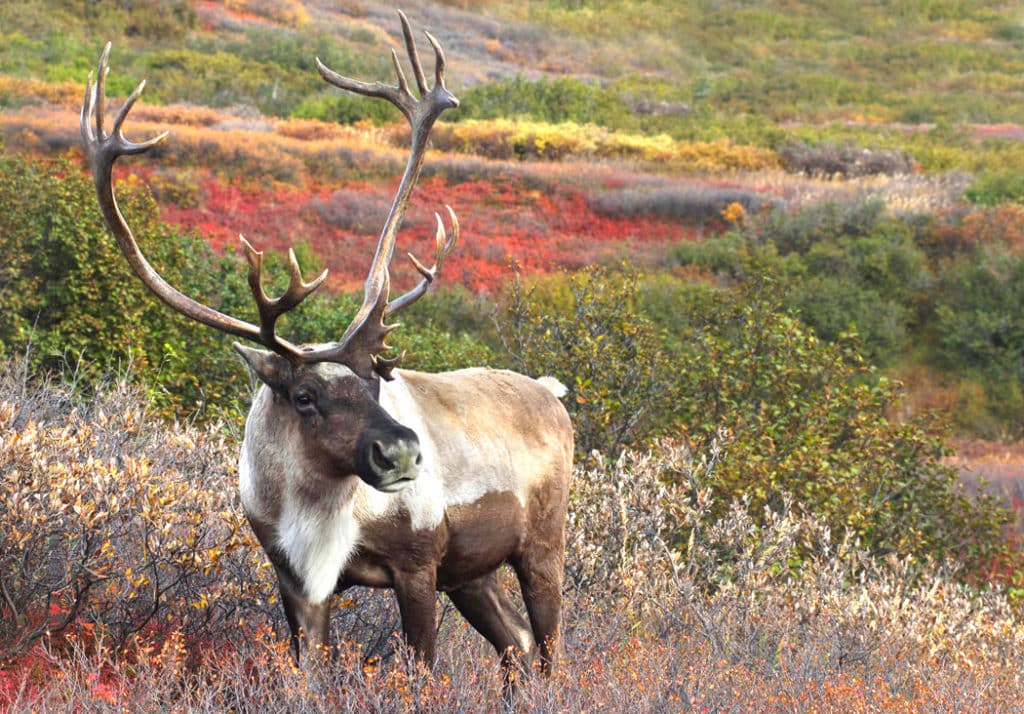
As wild and remote as Gates of the Arctic National Park, Kobuk Valley is famous for huge herds of caribou that crisscross the valley on their annual migration and for the largest active sand dunes in the Arctic. The dunes are an excellent environment for hiking and camping. There is enough to keep you occupied on the trails for a few days, or you could fly in for the day from Kotzebue with Golden Eagle Outfitters.
In summer, the park can be accessed by boat, air taxi or by hiking in. In winter, the access options include air taxis, snowmobiles and the good old hike.
Like with most remote National Parks of Alaska, it is easier to visit Kobuk Valley on an organized expedition. Onion Portage Adventures, for example, offer a base came inside the park as well as a variety of activities like fishing, dune hiking, rafting, mushing, river boating, wildlife viewing and hiking.
I hope this guide gives you a good idea of which National Parks of Alaska are the best options for you.

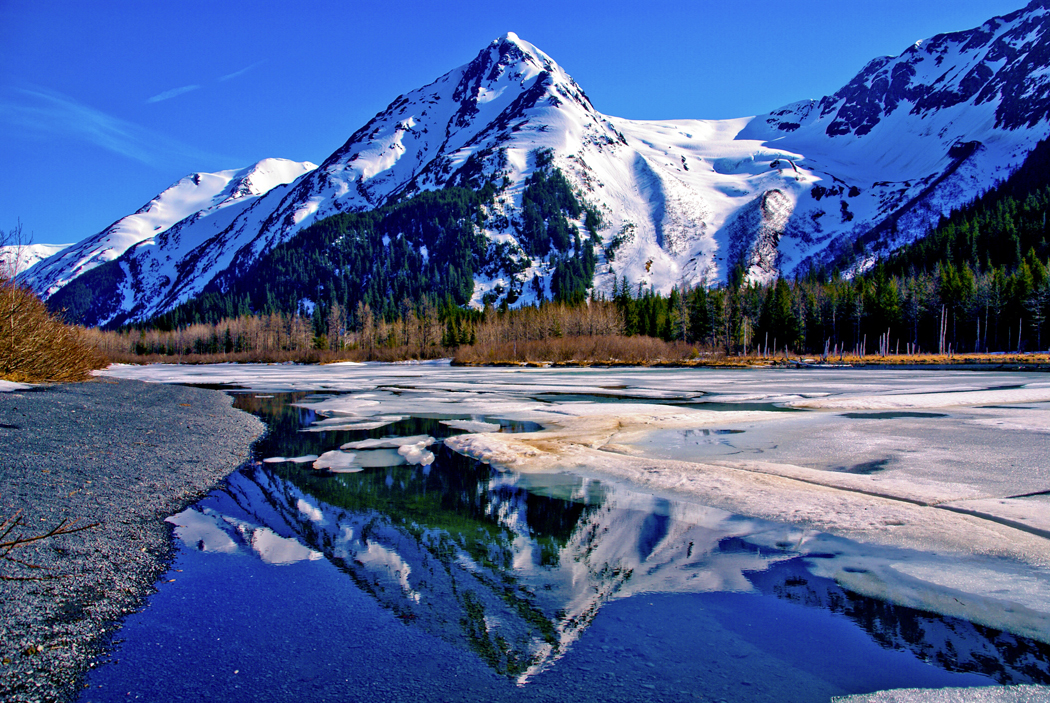
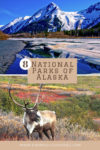
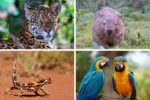
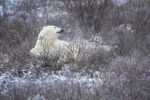
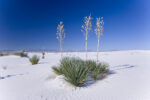
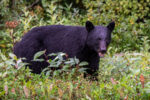
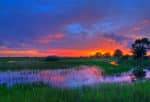
Such an interesting post! To be honest, I only really heard about Denali and Wrangell-St. Elias National Park, but I would love to spend some time in all of them! The hiking and paddling must be incredible in the summertime! This post gives me so much wanderlust!
p.s is Katmai National Park where they take photos of fat bear week? Those bears are huuuge compared to the ones here in BC!
Oh my, those are fat bears! I haven’t heard of Fat Bear Week before so had to look it up. Yes, it is in Katmai and gosh, they are chubby. Thanks for putting it on my radar, Josy!
Stunning pics!…so inspiring!
Your collection of Alaska’s NPs brings back so many amazing memories. I itch to go back to Denali and visit all the other parks we missed last time..
I went to Denali many years ago, but I’ve always wanted to visit Alaska’s more remote parks. These photos are gorgeous!
I’m hoping to visit Glacier National Part this coming summer! I’d also really love to visit Denali in the future. This is a great article, thanks for sharing!
Thank you, Courtney
Wow. Simply wow. I’ve never been to Alaska but dream of visiting—and of course seeing all these amazing national parks in Alaska! I have a long-term plan of taking an epic road trip up through Canada and then all around Alaska. Can’t wait!!!
That sounds like an awesome road trip!
I’m dying to go there! Definitely saving this for when I’m able to go on this dream trip!
Great round-up of all the National Parks of Alaska. I spent 5 summers working in this amazing state and it took me right down memory lane. Thank you!
That must’ve been an incredible experience! I’d take a seasonal job in Alaska in a heartbeat :)
I can’t wait to travel to Alaska! All of these national parks look so beautiful to visit, and great for me since I like to be out in nature.
The National Parks of Alaska look very beautiful! I would love to visit the Denali National Park, Lake Clark National Park and the Glacier Bay National Park, so I’m saving this later.